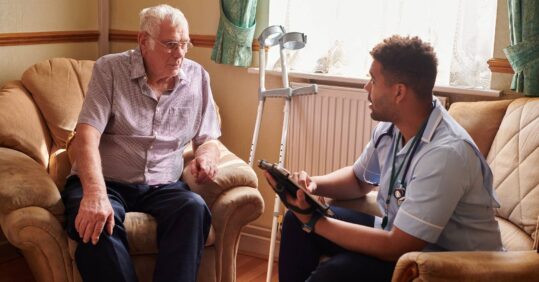‘Definitely a place’ for virtual wards in primary care

Nurses are working to secure ‘a place’ for virtual wards within primary care settings and to ensure the nursing workforce is educated on how to use them, Nursing in Practice has been told.
Virtual wards – which include remote monitoring and advice or ‘hospital at home’ models – were the subject of a discussion at this year’s Royal College of Nursing (RCN) Congress, spearheaded by the RCN General Practice Nurse (GPN) Forum.
Nurses from across different settings debated the ‘pros and cons’ of virtual wards for the workforce and for patients during a discussion on Wednesday.
Some felt virtual wards were ‘the way forward’ especially amid ‘crumbling’ NHS buildings and that they should be embraced, while others suggested ‘more thought’ was needed around how the service was delivered for different patients with different needs.
Related Article: QICN bids farewell to Dr Crystal Oldman as she retires from CEO role
Leading the discussion was RCN GPN Forum member Ellen Nicholson, who said virtual wards had helped to deliver ‘opportunities for quality care delivery’ but warned that ‘workforce and skill shortages’ could ‘impact’ their expanding use.
Last month, NHS England announced plans to ‘increase virtual ward use’ following analysis that suggested 9,000 hospital admissions had been avoided due to a virtual ward model in the South East.
Ms Nicholson acknowledged there was a ‘wide opportunity for virtual wards to provide more expansive and holistic care’.
But she questioned whether nurses had ‘equitable access to training on virtual ward technology’ and whether thought was given around the involvement of nursing students.
Speaking to Nursing in Practice following the RCN Congress discussion, Ms Nicholson said funding for virtual wards in primary care settings had not been ‘thought about’.
‘They’re often set up by acute funding, with the ICB [integrated care board] funding to go into the community looking outward as opposed to more looking inwards and keeping those people out of hospital,’ she said.
Related Article: RCN to offer ‘safe space’ to discuss Supreme Court ‘sex’ ruling
‘Why can’t we have them in the PCN [primary care network] setting?’
In another post-discussion interview, primary care nurse and RCN UK professional lead for long term conditions Callum Metcalfe-O’Shea, said trying to ‘find a place’ for virtual wards in primary care was the focus, ‘because there’s definitely a place for it’.
‘[Virtual wards] help with the different layers between primary and secondary care, and it’s about making sure that we’re educating our primary care nurses on how it can be used to support patients and reduce the risk of admissions,’ he told Nursing in Practice.
Mr Metcalfe-O’Shea added: ‘For us in primary care, we’re part of a community and patients want to be in their own community and have those services to access.’
Related Article: ‘Concerning acceleration’ in drug-resistant gonorrhoea ahead of vaccine programme
Also ‘key’ to primary care nurses was ensuring older patients are educated and reassured around ‘digital nursing’.
‘[Virtual wards are] a way that we can support patients remotely and in the community itself,’ he added.

See how our symptom tool can help you make better sense of patient presentations
Click here to search a symptom




